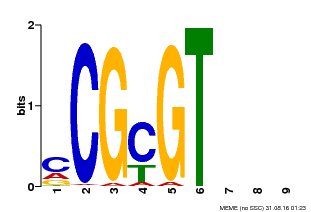- Reddy AS,Reddy VS,Golovkin M
A calmodulin binding protein from Arabidopsis is induced by ethylene and contains a DNA-binding motif.
Biochem. Biophys. Res. Commun., 2000. 279(3): p. 762-9
[PMID:11162426] - Reddy VS,Ali GS,Reddy AS
Genes encoding calmodulin-binding proteins in the Arabidopsis genome.
J. Biol. Chem., 2002. 277(12): p. 9840-52
[PMID:11782485] - Bouch
A novel family of calmodulin-binding transcription activators in multicellular organisms.
J. Biol. Chem., 2002. 277(24): p. 21851-61
[PMID:11925432] - Yang T,Poovaiah BW
A calmodulin-binding/CGCG box DNA-binding protein family involved in multiple signaling pathways in plants.
J. Biol. Chem., 2002. 277(47): p. 45049-58
[PMID:12218065] - Mitsuda N,Isono T,Sato MH
Arabidopsis CAMTA family proteins enhance V-PPase expression in pollen.
Plant Cell Physiol., 2003. 44(10): p. 975-81
[PMID:14581622] - Yamada K, et al.
Empirical analysis of transcriptional activity in the Arabidopsis genome.
Science, 2003. 302(5646): p. 842-6
[PMID:14593172] - Galon Y, et al.
Calmodulin-binding transcription activator (CAMTA) 3 mediates biotic defense responses in Arabidopsis.
FEBS Lett., 2008. 582(6): p. 943-8
[PMID:18298954] - Hou X, et al.
Global identification of DELLA target genes during Arabidopsis flower development.
Plant Physiol., 2008. 147(3): p. 1126-42
[PMID:18502975] - Ascencio-Ib
Global analysis of Arabidopsis gene expression uncovers a complex array of changes impacting pathogen response and cell cycle during geminivirus infection.
Plant Physiol., 2008. 148(1): p. 436-54
[PMID:18650403] - Du L, et al.
Ca(2+)/calmodulin regulates salicylic-acid-mediated plant immunity.
Nature, 2009. 457(7233): p. 1154-8
[PMID:19122675] - Jones AM, et al.
Phosphoproteomic analysis of nuclei-enriched fractions from Arabidopsis thaliana.
J Proteomics, 2009. 72(3): p. 439-51
[PMID:19245862] - Eckardt NA
CAMTA proteins: a direct link between calcium signals and cold acclimation?
Plant Cell, 2009. 21(3): p. 697
[PMID:19270185] - Doherty CJ,Van Buskirk HA,Myers SJ,Thomashow MF
Roles for Arabidopsis CAMTA transcription factors in cold-regulated gene expression and freezing tolerance.
Plant Cell, 2009. 21(3): p. 972-84
[PMID:19270186] - Walley JW,Dehesh K
Molecular mechanisms regulating rapid stress signaling networks in Arabidopsis.
J Integr Plant Biol, 2010. 52(4): p. 354-9
[PMID:20377697] - Shin R,Jez JM,Basra A,Zhang B,Schachtman DP
14-3-3 proteins fine-tune plant nutrient metabolism.
FEBS Lett., 2011. 585(1): p. 143-7
[PMID:21094157] - Jing B, et al.
Brush and spray: a high-throughput systemic acquired resistance assay suitable for large-scale genetic screening.
Plant Physiol., 2011. 157(3): p. 973-80
[PMID:21900483] - Nie H, et al.
SR1, a calmodulin-binding transcription factor, modulates plant defense and ethylene-induced senescence by directly regulating NDR1 and EIN3.
Plant Physiol., 2012. 158(4): p. 1847-59
[PMID:22345509] - Qiu Y,Xi J,Du L,Suttle JC,Poovaiah BW
Coupling calcium/calmodulin-mediated signaling and herbivore-induced plant response through calmodulin-binding transcription factor AtSR1/CAMTA3.
Plant Mol. Biol., 2012. 79(1-2): p. 89-99
[PMID:22371088] - Curran A, et al.
Calcium-dependent protein kinases from Arabidopsis show substrate specificity differences in an analysis of 103 substrates.
Front Plant Sci, 2011. 2: p. 36
[PMID:22645532] - Laluk K, et al.
The calmodulin-binding transcription factor SIGNAL RESPONSIVE1 is a novel regulator of glucosinolate metabolism and herbivory tolerance in Arabidopsis.
Plant Cell Physiol., 2012. 53(12): p. 2008-15
[PMID:23072934] - Kim Y,Park S,Gilmour SJ,Thomashow MF
Roles of CAMTA transcription factors and salicylic acid in configuring the low-temperature transcriptome and freezing tolerance of Arabidopsis.
Plant J., 2013. 75(3): p. 364-76
[PMID:23581962] - Zhang L,Du L,Shen C,Yang Y,Poovaiah BW
Regulation of plant immunity through ubiquitin-mediated modulation of Ca(2+) -calmodulin-AtSR1/CAMTA3 signaling.
Plant J., 2014. 78(2): p. 269-81
[PMID:24528504] - Benn G, et al.
A key general stress response motif is regulated non-uniformly by CAMTA transcription factors.
Plant J., 2014. 80(1): p. 82-92
[PMID:25039701] - Bjornson M, et al.
Distinct roles for mitogen-activated protein kinase signaling and CALMODULIN-BINDING TRANSCRIPTIONAL ACTIVATOR3 in regulating the peak time and amplitude of the plant general stress response.
Plant Physiol., 2014. 166(2): p. 988-96
[PMID:25157030] - Waidmann S,Kusenda B,Mayerhofer J,Mechtler K,Jonak C
A DEK domain-containing protein modulates chromatin structure and function in Arabidopsis.
Plant Cell, 2014. 26(11): p. 4328-44
[PMID:25387881] - Jin J, et al.
An Arabidopsis Transcriptional Regulatory Map Reveals Distinct Functional and Evolutionary Features of Novel Transcription Factors.
Mol. Biol. Evol., 2015. 32(7): p. 1767-73
[PMID:25750178] - Rahman H,Yang J,Xu YP,Munyampundu JP,Cai XZ
Phylogeny of Plant CAMTAs and Role of AtCAMTAs in Nonhost Resistance to Xanthomonas oryzae pv. oryzae.
Front Plant Sci, 2016. 7: p. 177
[PMID:26973658] - Benn G, et al.
Plastidial metabolite MEcPP induces a transcriptionally centered stress-response hub via the transcription factor CAMTA3.
Proc. Natl. Acad. Sci. U.S.A., 2016. 113(31): p. 8855-60
[PMID:27432993] - Kidokoro S, et al.
Different Cold-Signaling Pathways Function in the Responses to Rapid and Gradual Decreases in Temperature.
Plant Cell, 2017. 29(4): p. 760-774
[PMID:28351986] - Lolle S, et al.
Matching NLR Immune Receptors to Autoimmunity in camta3 Mutants Using Antimorphic NLR Alleles.
Cell Host Microbe, 2017. 21(4): p. 518-529.e4
[PMID:28407487] - Kim YS, et al.
CAMTA-Mediated Regulation of Salicylic Acid Immunity Pathway Genes in Arabidopsis Exposed to Low Temperature and Pathogen Infection.
Plant Cell, 2017. 29(10): p. 2465-2477
[PMID:28982964] - Jacob F, et al.
A dominant-interfering camta3 mutation compromises primary transcriptional outputs mediated by both cell surface and intracellular immune receptors in Arabidopsis thaliana.
New Phytol., 2018. 217(4): p. 1667-1680
[PMID:29226970]
|





